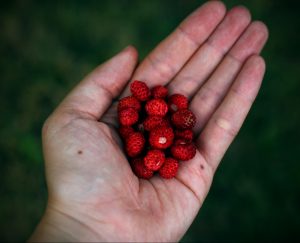 As the semester comes to a close, so does our project with Vancouver Coastal Health. If you would like to see our infographic to summarize our project please click here: Group 11 Project Infographic
As the semester comes to a close, so does our project with Vancouver Coastal Health. If you would like to see our infographic to summarize our project please click here: Group 11 Project Infographic
Moment of Significance: The Process of Finalizing Our Project
What?
Over the past few months we worked closely with community members trialling the Vancouver Food Asset Map (VFAM) and collecting data via surveys. In addition, we were able to contribute to the VFAM by adding and updating food assets. We then were able to summarize our findings with the creation of an infographic. To begin our infographic, we compiled the survey data we collected from 20 community members. Of the entire survey we selected 3 questions to display on our infographic, which we thought best highlighted and concluded the results of the survey. We then assigned roles for efficient completion of the infographic. We started off with an exceedingly informative infographic on which we based our elevator pitch. We later decided to trim out unnecessary details to highlight our main focal points, including the three questions chosen from the surveys.
So What?
After working on this group project, we collectively agree with Phillips (2014) that diversity does make us smarter. Each of us was able to use our individual experiences to help uncover circumstances or problems using our diverse perspectives. Even though we all come from the same faculty, we are specializing in different majors. This allowed each group member to focus on different aspects of the project therefore creating stronger and broader discussions, which helped analyze problems from various perspectives. Through our group discussions and meetings, we were able to learn the strengths of each group member. This helped us design a plan of action for the upcoming infographic and presentation. Within our group, one member had experience with graphic design so they were able to use their skills to execute the design of the infographic. Two of our group members have experience and are comfortable with public speaking; therefore they were chosen to present the infographic. After recognizing each member’s individual strengths, we were able to apply them to our final project to achieve maximum efficiency in completing and sharing our findings. Overall, this project has given us a better understanding of asset-based community development (ABCD) through working with Vancouver’s food production assets and conducting research for the VFAM. We value that this project has allowed us to put the ABCD concept to practice as well as experience the benefits first hand. We were able to learn about the existing food assets that Vancouver has to offer all while increasing the accessibility and effectiveness of these assets. We were able to do this both directly and indirectly by updating the map itself and by gathering suggestions from community members. It was interesting to hear what community members had to say about the map and how suggestions differed from person to person. As explained by Sirolli (2012), it is important to listen to the individuals who you are trying to help in order to fully understand their perspective. This concept was highlighted during the map trialling sessions and allowed us to better develop the map for who it is intended for which is ultimately the Vancouver community.
Now What?
With our well-developed infographic and knowledgeable presenters, we feel it is crucial to deliver our message adequately so that other members of the community may become inspired to explore this food asset tool. We believe the VFAM is a valuable resource and encourage all members of the community to use it. By spreading this message, we would like see a community-wide increase in the awareness and utilization of the VFAM. Our suggestion for groups who work on this project in the future is to consider the implementation of trialling, promotion and education of the VFAM to community members at public community libraries. One challenge we recognize is that the VFAM is an internet tool and people affected by food insecurity may not have frequent or easy access to the internet. Therefore, public libraries are an ideal location where computers and internet are readily available. A location such as this also allows us to better interact and help community members with questions and navigation of the map. As we wrap up our time with this project and hand it off to the next group we look forward to seeing further growth and development.
In the remaining time of the semester we are looking forward to presenting our infographic to the UBC community. Additionally, we will be wrapping up the last pieces of our project, which include finalizing the new and updated food production assets for the map and writing the final report. Throughout the term we have found success in our strategy of communicating effectively, recognizing each other’s strengths and delegating roles. As we move on to write our final paper, we will continue using this approach in order to finish strong.

